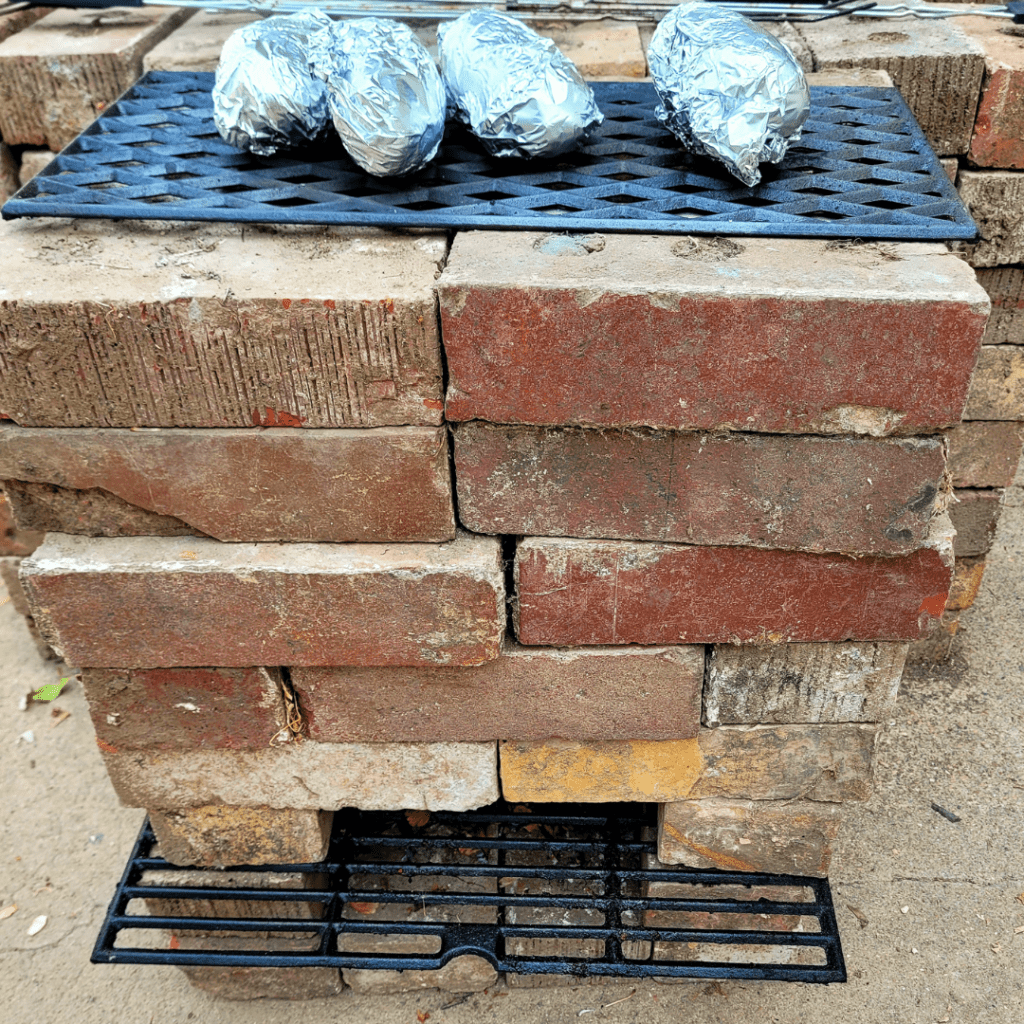Wondering what doomsday preppers stock up on? From long-term food supplies and water filtration systems to medical kits, off-grid tools, and self-defense gear, preppers focus on survival essentials. Learn how to prep like a pro and build your own emergency stockpile today with my practical guide!
In a world that feels increasingly unpredictable, a growing sector of our society is making preparation a way of life. Known as ‘doomsday preppers’, they believe in arming themselves with knowledge, skills, and supplies to survive possible calamities. This preparation can range from natural disasters to economic meltdowns, societal breakdowns, pandemics, or even smaller-scale incidents like power outages and storms. Fueled by a conscious awareness of various threats and vulnerabilities, these individuals spend considerable time, resources, and energy getting ready for scenarios most of us would rather not contemplate.
This is a pinnable post. Tap or hover over any image in this post to pin to your Pinterest Boards.
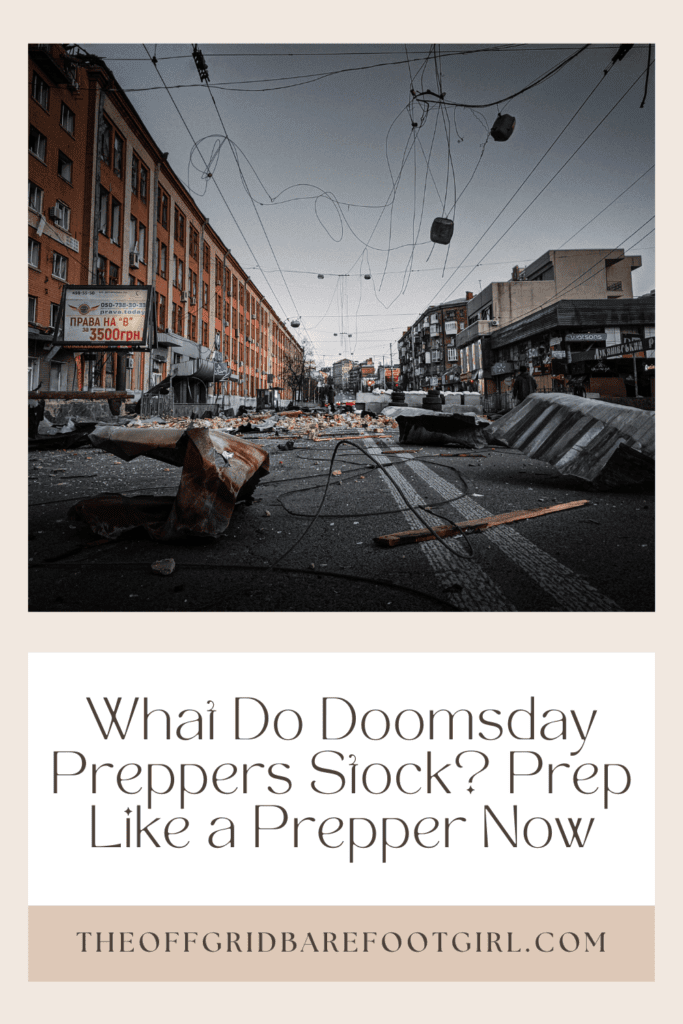
Understanding Doomsday Prepping
Who are the Doomsday Preppers?
Doomsday preppers, also known as survivalists, are individuals who prepare for catastrophic events that could potentially disrupt social or political order. These events could range from natural disasters to financial crises, pandemics, nuclear attacks, or even extraterrestrial invasions. Preppers might prepare for short-term disruptions, like hurricanes or earthquakes, or long-term outcomes like societal collapse.
The Mindset and Motivation Behind Doomsday Prepping
The mindset of a doomsday prepper is centered around readiness and self-reliance. They believe that it’s their responsibility to prepare for potential catastrophes and not depend on government or other external assistance. This sense of personal responsibility, combined with a belief in the inevitability of disaster, drives their motivation to stockpile supplies and learn survival skills.
Preppers’ triggers for preparing can vary widely. For some, a personal experience with disaster, like living through a major hurricane or earthquake, sparks their commitment to preparation. For others, political or social changes, economic instability, or scientific predictions trigger their prepping activities.
The events that triggered me to become a prepper were the numerous natural disasters, power outages, storms, earthquakes, and, of course, the global pandemic in 2020. We experienced a week-long power outage, a tornado, an earthquake, and the coronavirus global lockdown basically all at the same time. Since then, I started prepping my pantry more and keeping a stockpile of what my family needs, as I noticed the grocery store shelves were bare during this time. We can experience these traumatic events a little bit more comfortably with a well-stocked prepper pantry.
What Doomsday Preppers Stock
When it comes to stockpiling, doomsday preppers prioritize items that can help them survive various disaster situations. The specific items may vary based on the individual’s perception of what disasters are most likely to occur, but there are some common categories that most preppers will consider.
Food and Water
Food and water are fundamental to survival. Preppers often stockpile canned goods, dehydrated food, grains, and other non-perishable food items. They also prioritize ways to purify and store water.
Health and Safety Supplies
Health and safety supplies are also essential. These can include first-aid kits, prescription medications, over-the-counter drugs, and hygiene products. Some preppers also stockpile surgical supplies and medicines for managing chronic conditions.
Shelter and Warmth
Shelter and warmth are crucial in survival scenarios, especially in cold climates or situations without electricity. Preppers may stockpile items like tents, sleeping bags, blankets, fire starters, and portable heaters.
Tools and Equipment
Preppers often store a variety of practical tools and equipment. This could include things like flashlights, multi-tools, knives, radios for communication, portable stoves for cooking, and solar panels for electricity.
Defensive Tools
Some preppers perceive threats from other humans in disaster scenarios, leading them to stockpile defensive tools. These might include firearms, ammunition, and protective gear.
Educational Materials
Many preppers store informative books and guides on survival skills, including medical treatment, farming and gardening, food preservation, and mechanics.
Essential Food and Water Stocks
Key Food Supplies for Doomsday Preppers
Food is a primary focus for doomsday preppers, particularly long-lasting items that do not require refrigeration or specialized storage conditions. This can include a variety of canned and dried foods, such as soups, and ready-to-eat meals like stews and pasta, which only require the addition of water and can be safely stored for up to two years.
MRE Meals
Another common source of nourishment is MREs (Meals Ready to Eat). These pre-packaged servings, often used by military personnel, are packed into compact, durable packages and can include everything from main courses and sides to desserts. MREs tend to be high in calories and nutrient content, structured to support a person’s dietary needs for a day. When stored at room temperature, their shelf life can extend up to 5 years.
Learn why stockpiling MRE meals for survival is crucial and if it is the right food for you and your family.
Stockpiling MRE Meals for Survival: Prep Your Pantry
Legumes and Rice
Staples like dried legumes and rice are also a high priority. Legumes such as beans, lentils, and peas offer essential protein, while rice provides essential carbs. If these items are appropriately stored, their shelf life can last between 8 to 10 years, making them a vital part of a prepper’s food stock.
Preservative Items
Preppers generally store substantial quantities of salt, sugar, and spices. These ingredients serve a dual purpose. Not only do they enhance the taste of stored food, but they also have significant preservative properties. Additionally, they can be utilized for multiple applications in a disaster situation, such as the preparation of preserved foods.
Having a good stockpile of preservative items in your pantry can help you be better prepared for canning and food preservation projects. This eliminates the need to head to the grocery store just to preserve your garden produce, as it heavily comes in bountiful harvests.
Essential Water Stocks for Doomsday Preppers
Water is a crucial commodity for survival, and it’s a significant part of a prepper’s strategy. Preppers usually store water in two formats: Bottled water and long-term storage containers. Bottled water is easily stored and transported, and can last indefinitely if kept in the right conditions.
Long-term storage typically involves larger, dedicated containers that can hold up to 55 gallons of water or more. These are used when settling into a location for an extended period. They need to be filled with potable water and treated with certain chemicals to prevent bacteria and algae growth, extending their safety lifespan.
Speaking of lifespan, water doesn’t spoil like food does, but it can become dangerous to consume if it’s contaminated. Hence, preppers also focus on water purification supplies. Water purification tablets or chlorine dioxide drops can be used to make unsafe water safe to drink. They also often have physical filtration systems to remove particulates, bacteria, and even some chemicals.
Learn more about stockpiling water for your survival pantry by visiting these other posts.
Understanding Water Purification Methods for Survival: Best Practices Explained
Thirsty for Survival: Expert Guide to Emergency Water Prep Tactics
Ensuring Effective Food and Water Storage
Equally important to storing provisions is knowing how to do it correctly. For food items, it stands to reason that they must be kept in dark, cool, and dry environments to retain their shelf life. Correspondingly, light and warmth can encourage algae and bacterial growth in water, which is why it’s ideal to store it in a cool, dark place.
However, pests can pose a real challenge. Thus, many preppers invest in pest-resistant containers and perform routine checks on their supplies for any signs of infestation. Keeping their storage areas well sealed and clean property is also critical. Additionally, by cycling through their stocks – using older supplies while replenishing with new ones, they can keep their reserves fresh and ready for use.
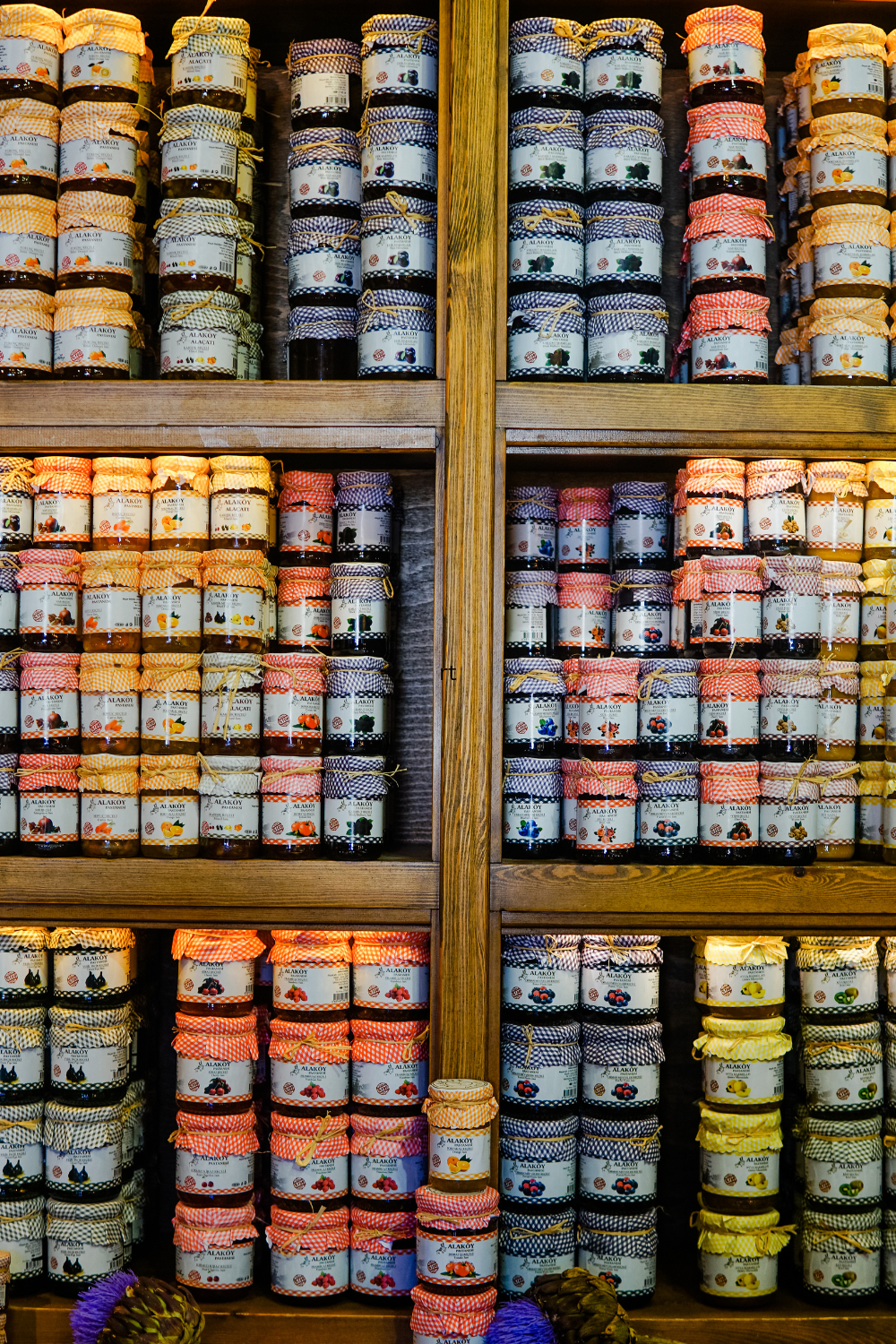
Survival Gear and Equipment
Essential Survival Food and Water Supplies
An indispensable part of any doomsday prepper’s planning involves ensuring a robust supply of food and water. This usually goes beyond just stocking up on canned goods and other non-perishables, but also includes freeze-dried meals and packets intended to last for years. Having water purification tablets and filters on hand is crucial, too, given that access to uncontaminated drinking water may be compromised. Furthermore, understanding hunting techniques and how to forage for food are critical survival skills in such scenarios.
Healthcare Supplies and Equipment
Medical supplies and healthcare equipment are equally significant for doomsday preppers. This includes first-aid kits, bandages, antiseptics, face masks, gloves, and potentially even trauma and surgical kits. The effectiveness of these items, however, goes hand in hand with having the proper knowledge and training for emergency medical treatment.
Shelters and Living Arrangements
Preppers often consider the need for a sustainable and secure shelter. This can range from a reinforced home to a bunker, to portable tents and sleeping bags for on-the-go mobility. Corresponding equipment like cooking stoves, space heaters, and sanitation systems, are often included to ensure the potential for long-term habitability.
General Survival and Defense Gear
In a situation where society or order collapses, self-defense becomes a key consideration. As such, firearms, ammunition, and melee weapons are commonly stockpiled. Survival tools such as multi-tool sets, knives, ropes, fire-starters, flashlights, and navigation tools are essential for adaptation in any environment.
Energy and Communication
In modern preparation, many consider alternate energy sources like solar panels and wind turbines to maintain electricity while storing fuel for generators. Communication devices like shortwave radios or walkie-talkies are also invaluable for contacting others or receiving emergency broadcasts.
Where and How to Procure Survival Gear
The gear and equipment necessary for survival can be procured in several places. For general survival tools and camping gear, outdoor and sporting goods stores will be of service. Specialty survival or military surplus stores may have more specialized items like gas masks or MREs (Meals Ready to Eat). Many preppers also attend gun shows or expositions for discerning equipment choices. Online platforms and auctions are often the go-to for particular or bulk orders. It’s essential to conduct proper research on items and prices to ensure quality and value.
The Decision Behind Doomsday Preppers’ Stockpiles
Doomsday preppers make calculated choices when it comes to the items they stockpile. The overarching motive behind these decisions is the belief that said items will enable self-sufficiency and provide vital protection in the event of a catastrophic emergency. Although every prepper’s approach to disaster preparation varies based on individual survival theories, geographical location, and personal skill sets, there is a common thread that ties them all together – the initiative to be independent, prepared, and resilient when calamity strikes.
Medical Supplies and Education
The Importance of a Medical Supplies Inventory
A primary priority for doomsday preppers is the meticulously curated assortment of medical supplies that forms an instrumental part of their survival arsenal. At the heart of this collection is usually a well-stocked first aid kit. Rather than relying on store-bought kits, many preppers opt to assemble their own, ensuring each kit is outfitted with equipment and supplies tailored to their specific needs. Essentials such as bandages, antiseptic wipes, tweezers, medical tape, painkillers, scissors, and sutures for severe injuries are typically included in these bespoke kits.
Investing in Over-the-Counter Medicines
Investing in a range of over-the-counter medicines is also a common practice among preppers. This could include medication for pain relief, allergies, stomach ailments, and skin irritations, among others. They put careful thought into the shelf life of the drugs they procure, aiming to procure those with longer expiration dates. In certain cases, they may also stockpile prescription medications. It’s important to note, however, that this requires careful management and consultation with healthcare professionals, as prescription drugs often have stringent storage requirements and usage instructions.
Stocking Durable Medical Equipment
Beyond typical medical supplies, many preppers also go a step further by stocking durable medical equipment. This could range from splints and crutches to manual defibrillators, depending on the individual’s resources and level of preparedness.
Importance of Medical Skills
While stockpiling medical supplies is indeed crucial, understanding how to effectively use those supplies is of equal importance. Even the most comprehensive first aid kit can become functionally useless without the appropriate skills and knowledge. Therefore, many preppers prioritize acquiring basic medical training.
Courses in first aid, cardiopulmonary resuscitation (CPR), and other emergency medical procedures are standard among preppers. Some might even take more advanced courses in trauma care if available. The idea is to be as self-sufficient as possible in a doomsday scenario where immediate professional medical help may not be available. Moreover, by mastering these skills, they could potentially save themselves or others in life-threatening situations.
It is also a good idea to keep tub chairs for easy showering or bathing when necessary. You never know when you might need such a chair while recovering from an injury or accident to help make showering easier. Ask me how I know this! When my family needed a shower chair, there were none available in our area.
Understanding the Importance of Medical Preparedness
The paramount role of medical preparedness in the realm of doomsday prepping cannot be overstated. Any potential disaster or emergency scenario comes with the inherent risk of injuries and sicknesses, making medical preparedness a vital contributor to one’s survival. Given that professional medical services may not be readily accessible during large-scale crises, being equipped to manage health issues becomes crucial.
Furthermore, having a medication reserve and basic healthcare skills within your preparedness strategy not only proves comforting in a tumultuous situation, but also reaffirms one’s ability to survive independently. This approach enhances a prepper’s sustainability during a crisis, underlining the importance of medical preparedness in the doomsday prepping landscape.
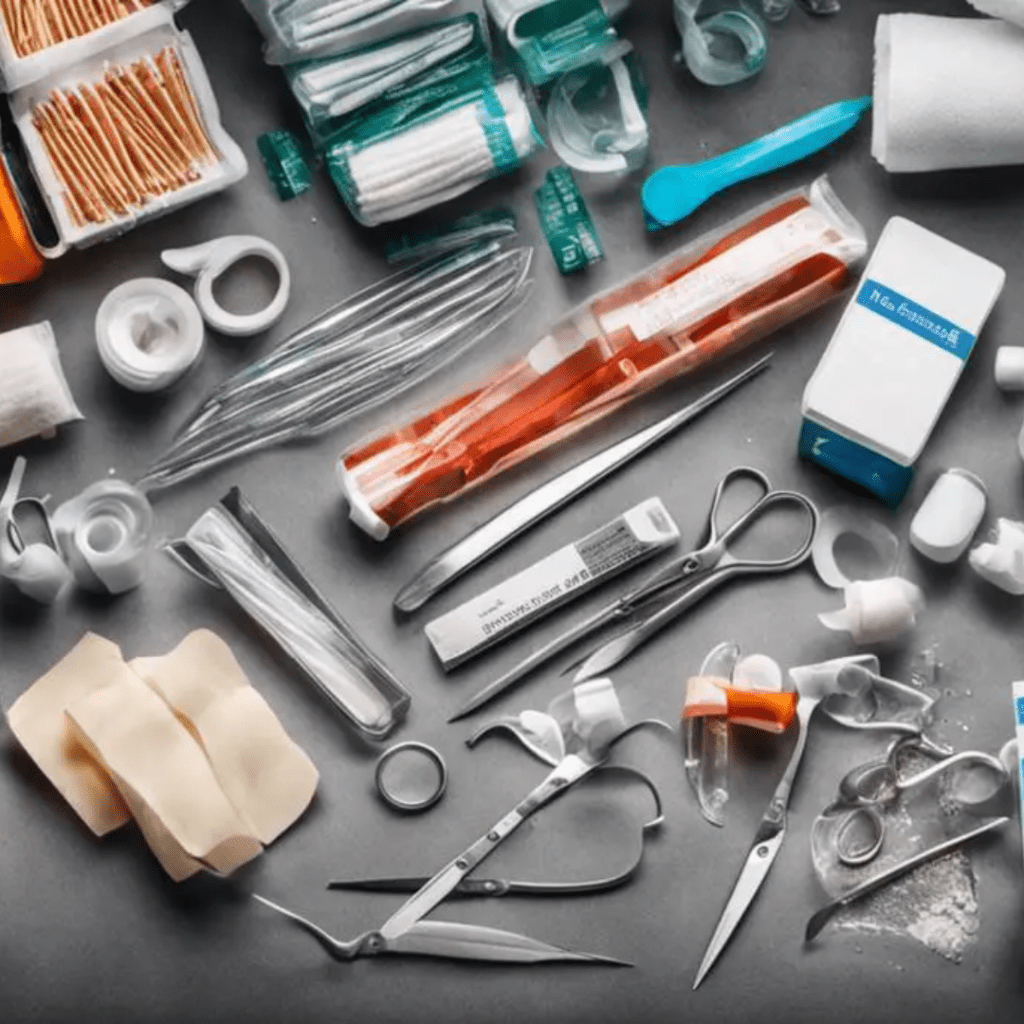
Long-Term Sustainability Preparations
Considering Power Solutions for Extended Crisis Situations
Within the framework of doomsday prepping, accommodating long-haul energy needs is a priority. In the event that public power sources become unavailable, preppers turn to alternative energy-generating methods. Solar panels are a favored solution, valued for their ability to produce electricity independent of any external input. Preppers often pair solar panels with battery storage technologies like Tesla Powerwalls, which safely stockpile surplus energy. Diesel or propane generators also feature in prepping plans, serving as trusted backup power providers.
Preparations for Heating
For heating purposes, many doomsday preppers have invested in wood-burning stoves. A wood-burning stove is a long-lasting solution for both heat and cooking, which works even in the absence of electricity. Preppers also store substantial amounts of wood and often have the knowledge and tools to source and process more if required.
To better help you find the perfect wood-burning stove for your own preferences, I have written a post that may help you determine which wood-burning stove is appropriate for you.
Wood Burning Stoves for Off Grid Survival: My Top 5: This Is What Preppers Do
Long-Term Food Supply: Farming and Livestock
A significant part of a prepper’s strategy for sustainability is providing their own food. This means growing crops and keeping livestock. Heirloom seeds are often stocked due to their ability to reproduce true-to-type year after year. Some preppers take it a step further by learning about permaculture—a design method for building food ecosystems that are sustainable and self-sufficient.
I have written many articles on growing your own food. Check out the articles within these two categories.
When it comes to livestock, chickens are the most popular for their dual purpose of providing both meat and eggs. Rabbits, goats, and pigs are kept for meat and other products.
Hunting and Gathering
Hunting is another method preppers use to obtain food during drawn-out crises. In addition to firearms for hunting game, they also stock up on fishing equipment and traps. Knowledge of local plants and how to forage for them is equally important. Edible wild plants can add nutritional variety to a prepper’s diet and medicinal plants can provide remedies for health issues when hospitals and pharmacies are no longer accessible.
Water Collection and Purification
Water is vital to survival—both for consumption and for farming or keeping livestock. Therefore, preppers consider having a water supply that does not rely on city water systems. This usually includes rainwater collection systems and water purification devices. Wells are also a frequent choice where possible.
Overall Preparation
Overall, preppers take a holistic view of long-term survival and sustainability. They prepare for all core life support needs: water, food, shelter, heating, and power. For every element of their preparation, they have backup plans in case their primary solution fails.
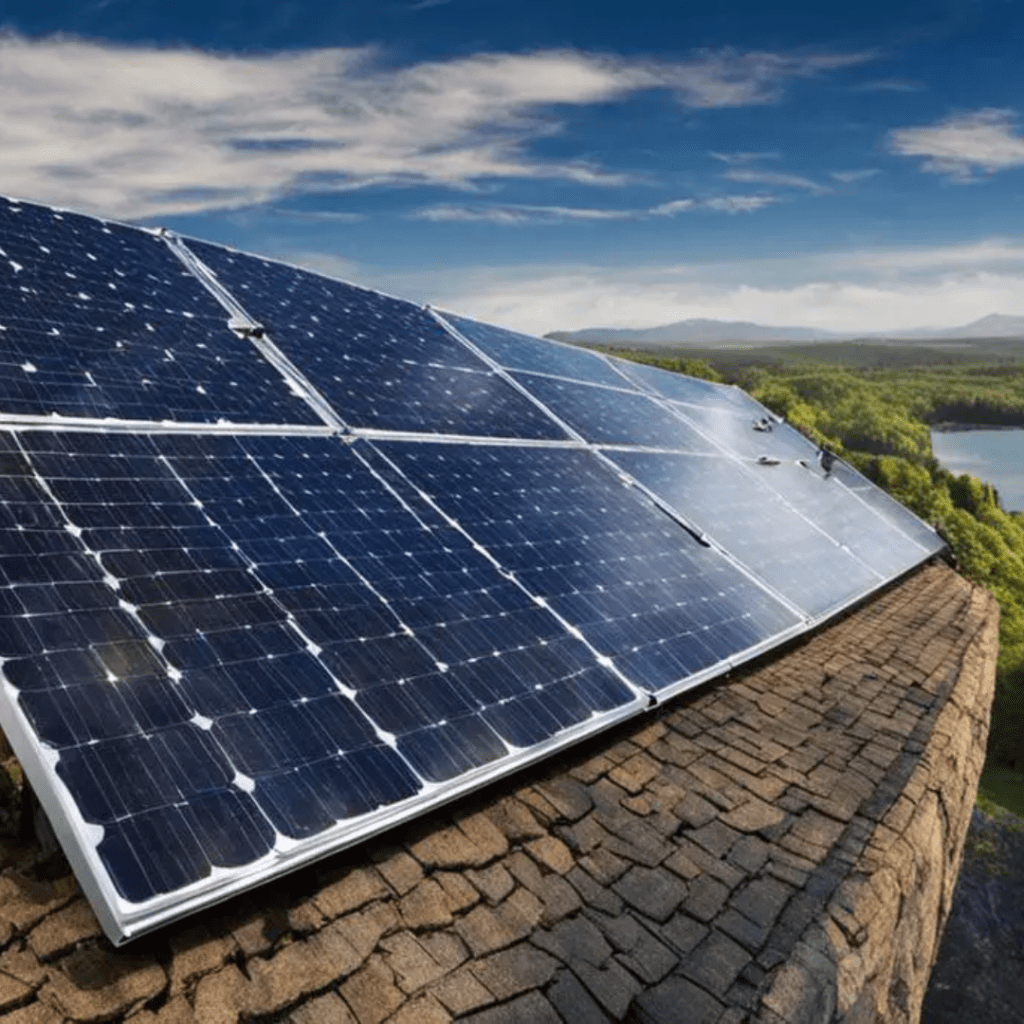
What may seem like an irrational obsession to many is merely a pragmatic lifestyle choice for preppers. They understand the fragility of societal systems and consider it prudent to be prepared for any circumstance that tips the balance. Whether it’s food, water, survival gear, medical supplies, or long-term sustainability plans, their meticulous preparations reflect an inherent instinct for survival and a deep sense of responsibility towards their own well-being as well as those whom they care about. Such an approach to life may not resonate with everyone, but one can’t deny the practicality and thoughtfulness ingrained in this practice.
Conclusion
To recap, the specific items that doomsday preppers stock may vary greatly depending on each prepper’s risk assessment, resources, and skillset. Despite this variability, the common denominator among all preppers is the focus on fundamental human needs, which include food, water, shelter, and security. In addition to these basic necessities, tools, and knowledge to manage and sustain these resources during disaster circumstances are also a high priority.
Learn how to build a comprehensive emergency stockpile and prep effectively by reading The Complete Guide to Emergency Preparedness: Everything You Need to Thrive in Any Situation.
Summary
I hope I have inspired you to explore the benefits of becoming a prepper with these helpful tips and products. Here are some other links you may be interested in reading!
Understanding Water Purification Methods for Survival: Best Practices Explained
Thirsty for Survival: Expert Guide to Emergency Water Prep Tactics
The Benefits of Urban Homesteading: Revolutionize Your City Life
Practical Pantry Prepper: Essential Guide
How to Grocery Shop Once a Month
What Should Be in A 72-Hour Survival Kit?
Buy or Die: Prepper Items You Need Now
How to Learn 58 Self-Sufficient Skills Right Now
Road to Self-Sufficiency: How to Start Your Journey
If you were encouraged by this post, I invite you to check out my FREE Printables Page for fun free printables, planners, and charts.
ENTER MY FREE Printables Page HERE
Blessings,
The Off Grid Barefoot Girl




